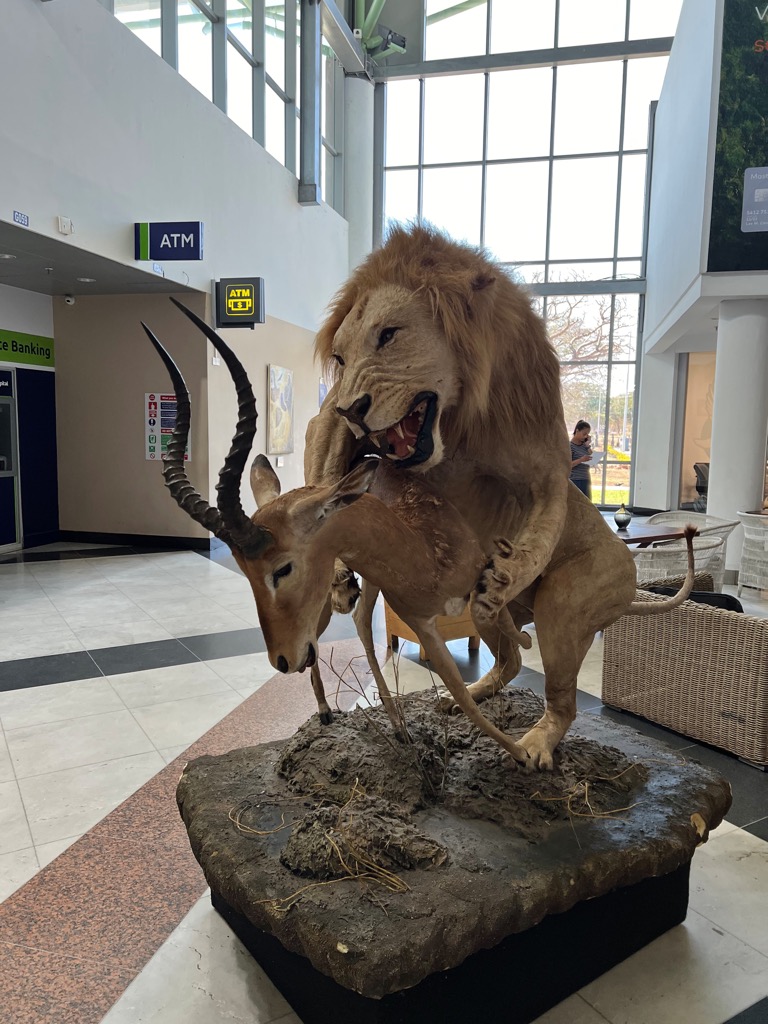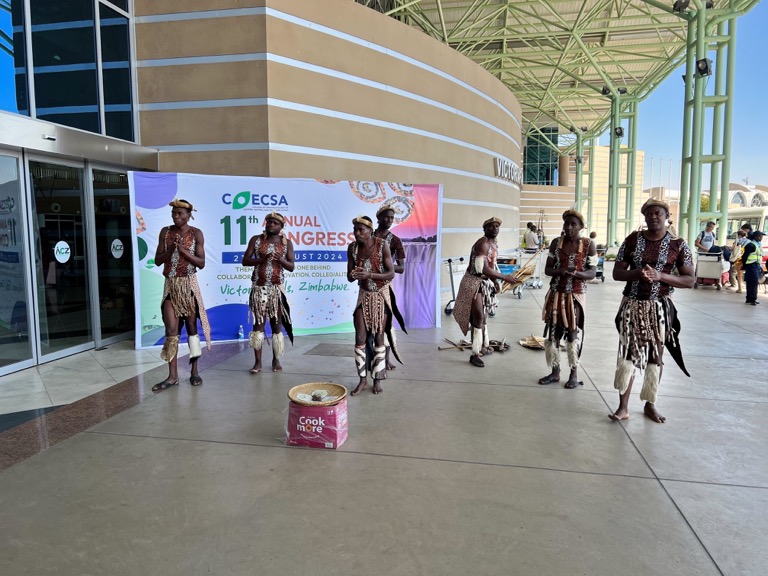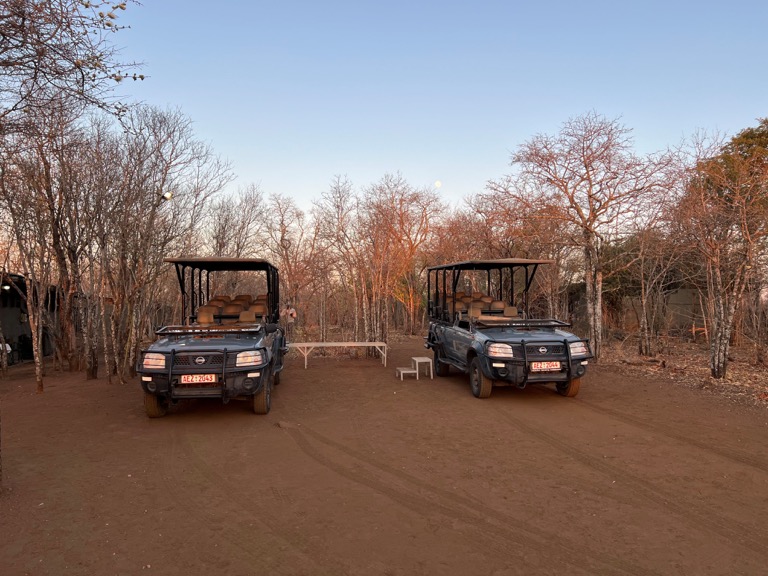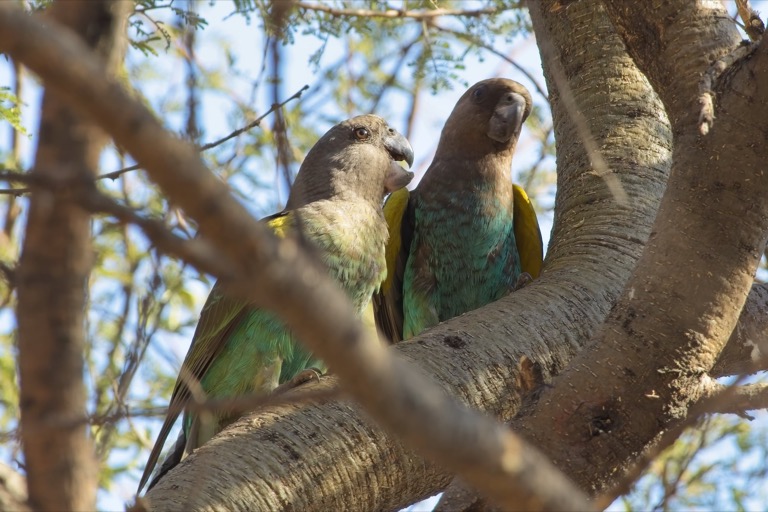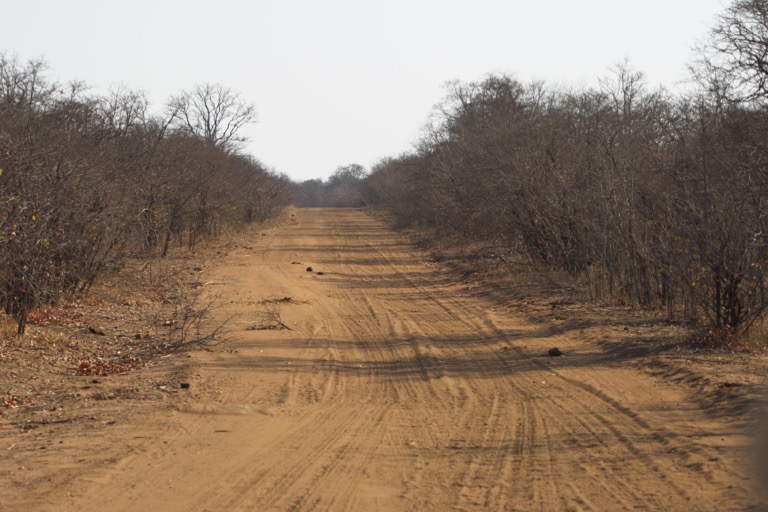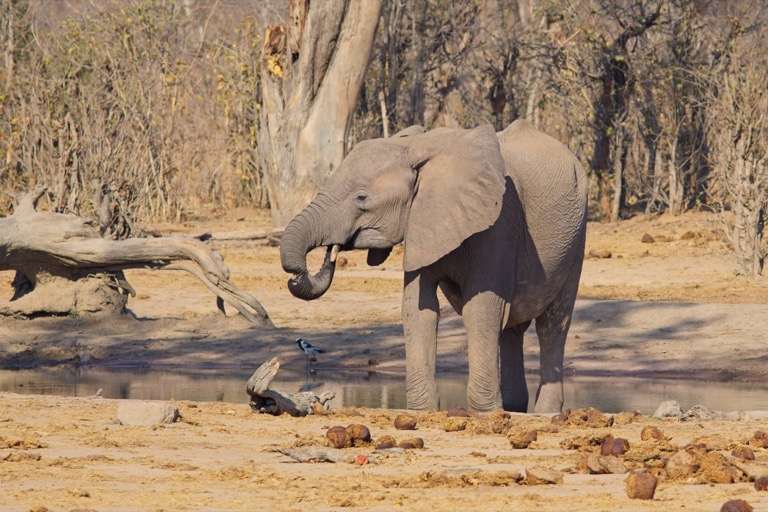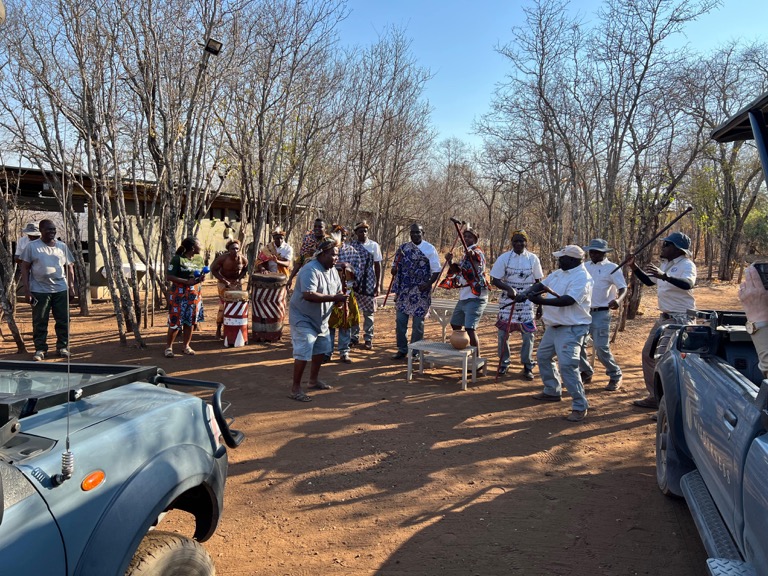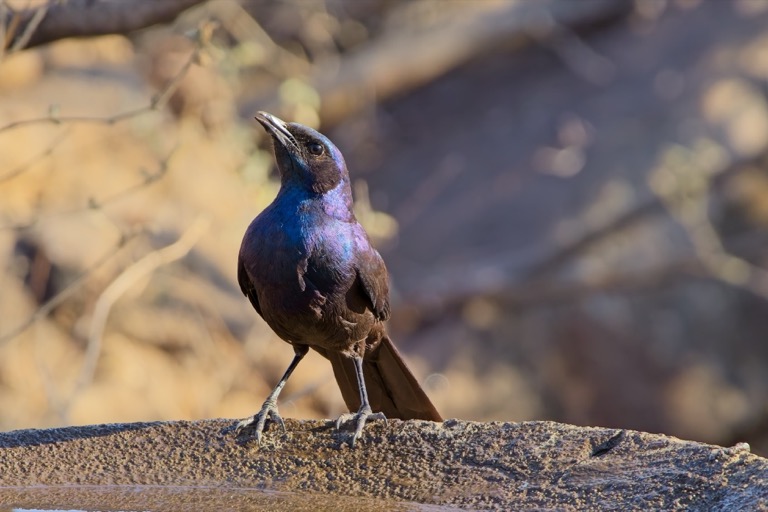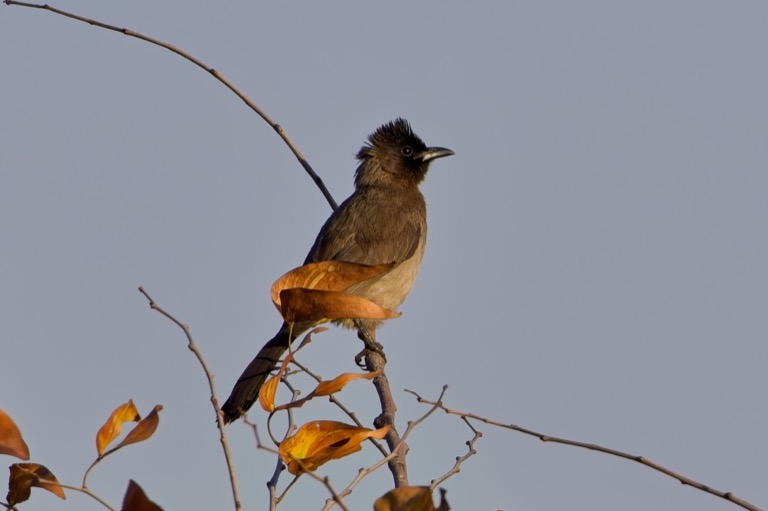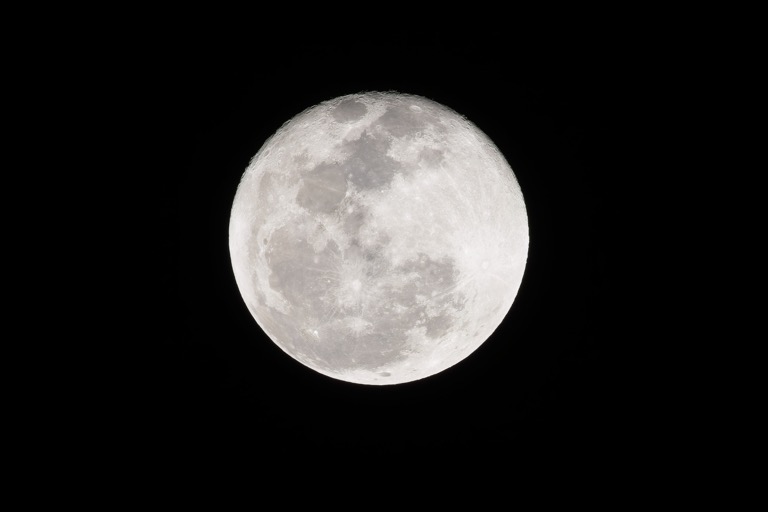on
To Hwange National Park
We flew Delta through Atlanta to Johannesburg, South Africa. It’s a 16-hour flight from Atlanta to Johannesburg in an Airbus 350. We arrived in the evening and got to the hotel next to the airport at 9 pm. We left the hotel at 7 am to fly to Victoria Falls. Our flights were uneventful.
After arriving in Victoria Falls, and clearing customs, we got a bag lunch and boarded a bus to drive to Hwange National Park in Zimbabwe. The airport had this taxidermy scene.
These dancers performed for us on as we exited the terminal building to board our bus. These dancers were from the Shona tribe.
The bus takes us part of the way to the safari camp, Kashawe Camp East, we’ll be staying at. There is an open pit coal mine just outside the entrance to Hwange National Park. Mining is banned inside the park. You drive through this mine to get to the park. The prep materials warned us to bring masks to wear during the game drives as the sand and dust can irritate your respiratory system. They are also needed while driving through this coal mining area.
The bus can’t handle the sandy roads in the park, so we switch to safari jeeps for the rest of the trip once we’re inside the park. This hour-long drive counts as our first safari drive.
The road is pretty good in places, and not so good in others. The sand can be deep and the jeeps fishtail in the deep sand. The guides jokingly tell us that in Africa it’s tradition for the women to get out and push if you get stuck.
The impala ran across the road in front of us and then up on the hillside beside the road.
Southern Africa has had a drought for the past 6-7 years, and it’s the end of the dry season, so it’s pretty dry.
We saw this elephant by a watering hole. Its trunk had been caught in a wire snare when it was younger and injured it.
The White-browed Sparrow-weaver builds it’s hanging nests on the downwind side of the tree. The winds have a prevailing direction, so it’s possible to use these nests as a crude compass.
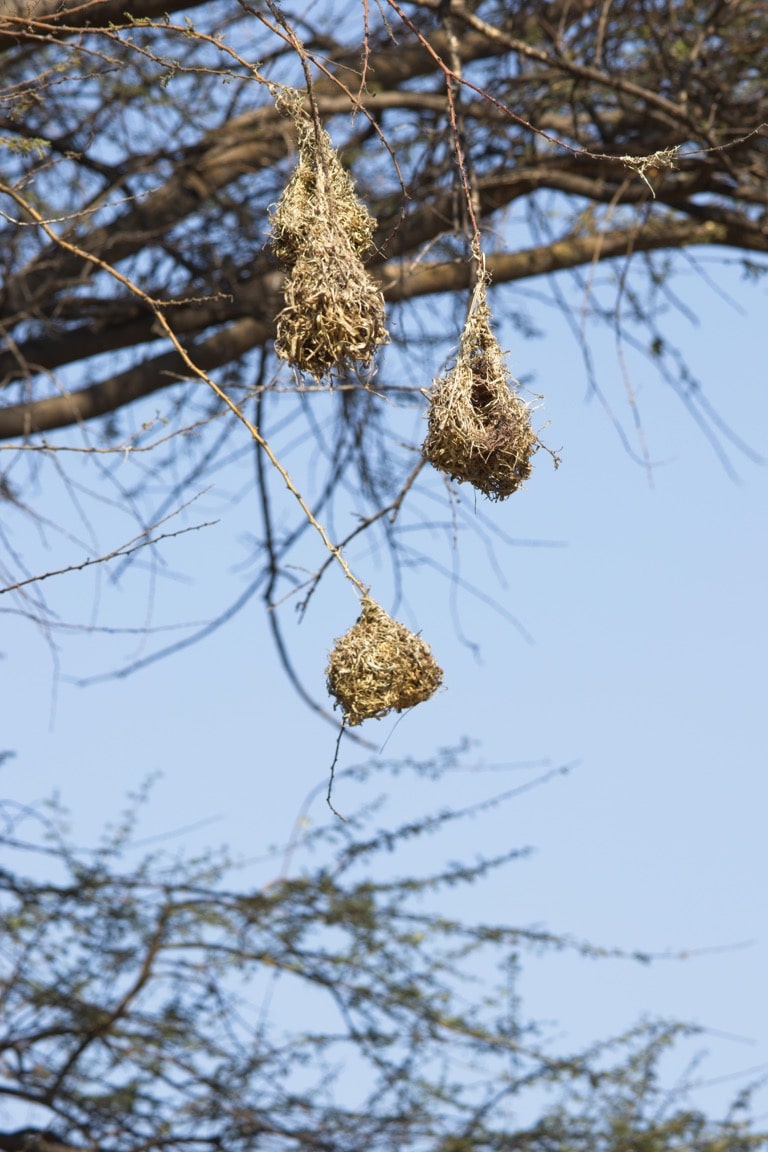
Much of the camp staff comes out to greet us and sing for our arrival at Kashawe Camp East in Hwange National Park. Our guides joined them on the right.
We had some time to walk around the camp before supper. There were a couple of bird baths by the lounge/dining area and, they were popular with the birds.
There is very little light pollution in the African National Parks, it was easy to see the stars and the full moon.
After supper and a short time to look at the stars and moon, we get walked to our tents for the night by the guides with a flashlight and a rifle. There are no fences and the animals can and do walk through camp.
